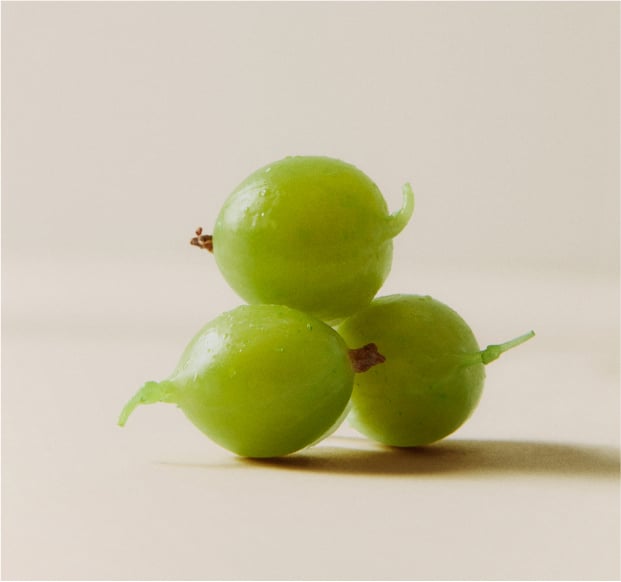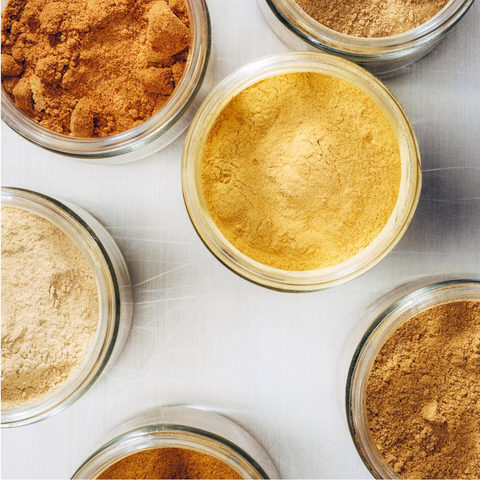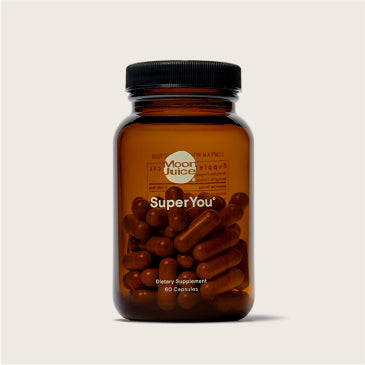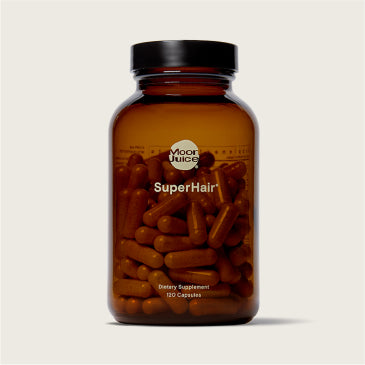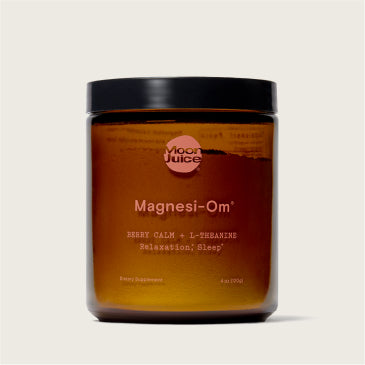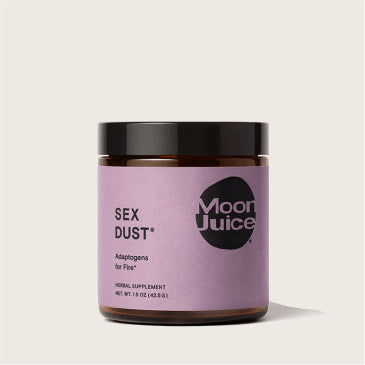Believe that oranges are the ultimate source of Vitamin C? Think again. There's a lesser-known superfruit that contains significantly more vitamin C than citrus fruits. It helps with everything from bouncing back after feeling under the weather to advancing your skin goals. It’s none other than Amla, aka Indian Gooseberry.
Keep reading to uncover Amla berry powder benefits and the rich history behind this Ayurvedic herb. Plus, we’ll cover why it's essential to include Amla powder and supplements in your wellness regimen.
What Is Amla Powder?
Native to India and subtropical regions of Southeast Asia, Amla (aka Indian Gooseberry) is a small, thorny tree that produces round, yellow-green fruits — or Amla berries. Healers have long used all parts of the plant for various remedies. However, Amla berries are deemed as the most important and beneficial part. As far as taste goes, raw Amla berries are noted for their astringency, acidity, and bitterness. When fresh Amla is dried and ground, these fruits produce Amla powder.
5 Benefits of Amla (Indian Gooseberry) Powder
1. Rich in Vitamin C
As we mentioned earlier, Amla is an abundant source of Vitamin C. While you might be used to sipping on orange juice to get your fix of the powerful antioxidant, Amla fruit actually has about 9 times the amount per serving size. A 100-gram serving of Amla packs 450 milligrams of Vitamin C, while the same amount of an orange offers 53 milligrams. In other words, consuming Amla goes a long way for your health and wellness. For reference, the recommended daily allowance (RDA) for Vitamin C is 75 milligrams daily for women and 90 milligrams for men. The upper limit for daily intake is 2,000 milligrams.
The benefits of Vitamin C can’t be understated. Of course, it’s famous for bolstering the immune system and reducing the length and severity of the common cold, but it’s also necessary to produce specific hormones and neurotransmitters. Most importantly, Vitamin C protects the cells from free radical damage and oxidative stress, which can have adverse impacts on your skin and overall health. According to the Free Radical Theory of Aging, the undesired changes that occur in our bodies over time are a direct result of the accumulation of free radicals in the body. Antioxidants are the special sauce to ward off damage, helping to keep you and your cells healthy and thriving.
The majority of the benefits of Amla powder are associated with its Vitamin C content and antioxidant property prowess.
2. Good Source of Diverse Nutrients
Although raw and dried Amla flexes its strength on the Vitamin C front, that’s not the only important nutrient it offers. Per a 2019 review in the Journal of Diseases and Medicinal Plants, Amla berries also pack:
- Vitamins and Minerals (Calcium, Phosphorus, Iron, Niacin, Carotene, Thiamine,
- Riboflavin, vitamin A, vitamin B1, and vitamin E)
- Macronutrients (Proteins and Carbohydrates)
- Fiber
- 80% water
Given its impressive nutrient profile, Amla berries can absolutely contribute to a well-rounded, diverse diet that supports overall health and well-being.
3. Collagen Production and Protection
According to a traditional text called Charaka Samhita, Amla is a natural, healing Ayurvedic medicine that has the power to extend youth and enhance vitality. As such, it’s long been hailed as a protective beauty tonic — and a growing body of clinical research is backing up this claim. Due to its antioxidant property profile, both raw and dried Amla aids the production of Collagen, which is critical to stave off the oxidative stress that leads to accelerated aging.
One study published in the Journal of Ethnopharmacology investigated the effects of Amla extract on human skin fibroblasts (i.e., the main cell type in the dermis or skin connective tissue) in vitro. The researchers discovered that Amla not only stimulated the proliferation of fibroblasts but also induced the production of procollagen. In addition, they witnessed:
- A dramatic decrease in the production of MMP-1, a type of matrix metallopeptidase (MMP) whose primary function is to degrade Collagen
- A significant increase in TIMP-1, which plays a central regulatory role in inhibiting MMPs and enhancing wound healing, regeneration, and cell survival
Based on these findings, Amla offers the benefits of collagen production and protection.
4. Skin Thickness and Hydration
Dealing with dryness or a lack of elasticity? How about the development of fine lines and wrinkles? If one (or all) of these issues concern you, supplementing with Amla can help yield visible improvements within weeks. In fact, because of the many benefits of Amla powder for the skin, it’s often used as an ingredient in topical use skincare products and also in supplements.
Published in the Biotechnology and Applied Biochemistry in 2019, a randomized, double-blind, placebo-controlled trial examined the effects of an oral Amla tonic (paired with Lingonberry) on 99 healthy female participants. After 12 weeks, women who ingested the Amla fruit extract experienced significant improvements in:
- Skin thickness
- Water content of the stratum corneum (outer layer of the dermis)
- The degree of wrinkles
5. Skin Tone Improvements
While Amla powder is a good choice to support your skin from the inside out, studies also show that it can be beneficial for your complexion when applied topically as well. A small 2021 randomized, double-blind, placebo-controlled study published in the Journal of Traditional and Complementary Medicine measured the effects of applying a topical gel with standardized levels of phenolic acids — primarily sinapic and ferulic acids — from the Amla branch.
Across 20 volunteers over 83 days, those who applied the Amla gel experienced “superior efficiency” in the following markers of skin health:
- Skin tone and pigmentation
- Elasticity
- Hydration
- Wrinkle reduction
Additional Amla Berry Benefits
Skin-friendly considerations aside, Amla is also associated with health benefits including but not limited to:
- Heart health
- Metabolic health
- Digestion
- Brain health
- Mental health
- Mood
How to Enjoy the Benefits of Amla
Organic Amla Powder
Amla berries might not be as ubiquitous as Vitamin C-rich citrus fruits and veggies. Fortunately, Amla powder can help you enjoy the benefits of the Ayurvedic wonderfruit with ease.
To help protect against oxidative stress and accelerated aging, opt for an organic Amla powder straight from its point of origin. Pure and simple, this beautiful berry is a 10:1 concentrate of Amla fruit extract. It lacks fillers and suspect additives, so you know you’re getting the highest quality Amla and all the benefits that Indian Gooseberry has to offer.
The light powder is tart and tannic on the palate while offering subtle hints of tropical flavor. If you don’t know how to use Amla powder, add 1/8 to 1/3 tsp to liquid on a daily basis. (Tip: this Amla supplement pairs well with matcha, as well as beverages with citrus and berries.)
Supplements with Amla
On the lookout for a supplement that offers the benefits of Amla and then some? SuperYou® is a great choice since it targets stress on your skin — and its effects that manifest within — in a convenient capsule form.
This clinical strength stress management supplement packs 4 potent adaptogens to help you cover all your bases: 150 mg of Organic Amla powder is the mix to help protect skin from oxidative stress.* This dosage of Amla powder is paired alongside:
- Ashwagandha Root used to help regulate cortisol and reduce irritability*
- Rhodiola Root used to reduce fatigue and increase alertness*
- Shatavari Root Extract used to support healthy hormonal balance*
Rest assured that SuperYou® can help reduce cortisol (aka the stress hormone) by 24% to help you get ahead of — as well as respond better to — the daily stressors that life throws your way. By helping to regulate cortisol and restore balance, this proactive and reactive stress support supplement offers a lifeline to alleviate the emotional, mental, hormonal, and physical manifestations of stress.*

Sources
- https://www.ncbi.nlm.nih.gov/pmc/articles/PMC6369608/
- https://www.ncbi.nlm.nih.gov/pmc/articles/PMC6369608/
- https://www.mayoclinic.org/healthy-lifestyle/nutrition-and-healthy-eating/expert-answers/vitamin-c/faq-20058030
- https://www.sciencepublishinggroup.com/journal/paperinfo?journalid=320&doi=10.11648/j.jdmp.20190501.11
- https://www.hsph.harvard.edu/nutritionsource/vitamin-c/
- https://www.verywellhealth.com/free-radical-theory-of-aging-2224227
- https://pubmed.ncbi.nlm.nih.gov/18588964/
- https://www.sciencedirect.com/topics/biochemistry-genetics-and-molecular-biology/mmp1
- https://www.ncbi.nlm.nih.gov/pmc/articles/PMC3857704/
- https://pubmed.ncbi.nlm.nih.gov/31342566/
- https://www.ncbi.nlm.nih.gov/pmc/articles/PMC8427479/
- https://www.ncbi.nlm.nih.gov/pmc/articles/PMC9137578/


